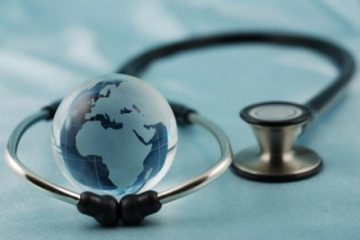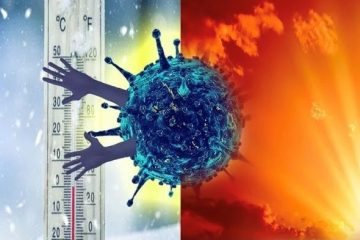As defined by the World Health Organization (WHO), early childhood development is the period of physical, socio-emotional, cognitive and motor development of children from 0-8 years of age. It is the period in which the architecture of the brain is constantly and rapidly changing, extremely permeable and sensitive to environmental stimuli. This period sets the foundation for the entirety of a child’s life. So, what happens in a global pandemic, when almost all non-immediate childhood needs are put on hold?
Globally, everything has come to a halt as we focus on mitigating the immediate health and economic effects of the virus. As policy makers and governments have shifted their focus to preventing and treating COVID-19 and saving dwindling economies, many other sectors have been paused. Such a pause can be tolerated by certain parts of society, but given the vulnerability of children’s development, casting aside their educational, nutritional, health, and emotional support needs in the most formative years of their life could have irreversible effects that we won’t be able to come back around to after the pandemic is under control.
The Chinese Ministry of Education estimates that more than 220 million children and adolescents have been confined to their homes during the pandemic. While schools across the globe are doing their best to adapt to the circumstances, I can’t help but fixate on the fact the content they are learning is much less important than the environment that they are learning in. Schools provide children with a safe and stimulating environment to build their brain, develop social and emotional skills, and learn through play and interaction with peers, friends, and teachers. Depriving children of this in-person learning is depriving them of all of these important stimuli that they receive outside of their homes.
Evidence suggests that when children are not in school, they are less physically active, have irregular sleep patterns, and unfavorable diets. One survey conducted in Canada found only 4.8% of children and .6% of youth to be meeting combined movement behavior guidelines during COVID-19 restrictions. Normally, these potentially harmful patterns only last a few months while children are on summer holiday, but what does this mean in the context of COVID-19, when in-person learning is not an option for many children?
Fear of infection, frustration, boredom, lack of personal space at home, and anxiety for the future have also greatly impacted children during the pandemic. One study showed a 4-fold increase in post-traumatic stress scores for children who had been quarantined compared to those who had not. This toxic stress can have long-term impacts on a person’s hormones, in turn affecting brain architecture, physiological and chemical makeup, and overall development in general.
Aggravating this emotional distress, are adults attempts to oversimplify or mask information when speaking to children. Research shows that children as young as 2 are aware of the changes around them, so filtering information to children, or denying them an accurate explanation in an attempt to shield them from harm, will oftentimes result in them inappropriately blaming or punishing themselves. Adults must provide an honest and clear explanation of the changes that are going on around them, and not withhold from sharing their own feelings about the pandemic.
Following the long-term patterns continuously seen in global health, the COVID crisis has quickly become a crisis of equity. With an estimated 42 to 66 million additional children estimated to experience extreme poverty during the pandemic, some people have called it a “social crisis in the making”. In countries like Kenya, where the national prevalence of wasting is already 26.2%, how will the economic hardship and school closures (where many children receive their meals) impact these children?
Sexual exploitation is also estimated to increase due to the pandemic. Looking at Ebola as an example, teen pregnancy, sexual violence, and marginalization all increased as a result of the crisis. In Sierra Leone, pregnancy in girls aged 12-17 increased 11%, bringing many additional health risks for the mother and child. Children are also much more exposed to domestic violence during the pandemic, with evidence showing an increase in violence as stress levels increase amongst parents and family members.
So how do we successfully take on this crisis in terms of childhood development?
First and foremost, we need to focus on equitable access to information and resources. As parents and caregivers have been identified as the most important support structure for children, they are a critical component of the governmental and humanitarian response. Relief efforts, in addition to addressing health, nutritional, and educational needs, must be accompanied by support for both child and caregiver mental health and well-being. For children who do not have access to caregivers, or cases in which caregivers do not have the capacity to meet childhood development needs, other organizations such as community health workers, paraprofessionals, civil society, and NGOs must come together to ensure that the needs of these children are met.
The platforms used to disseminate information and resources are equally as important as the content shared. In 2019, an estimated 364 million young adults aged 15-24 did not have access to the internet at home. Providing information solely through online platforms would only further the equity gap for these vulnerable groups. Radio, tv, mass media, and app-based learning programs are all examples of additional platforms that can be used to support early childhood educators and caregivers at home. Some positive country examples of this are Peru and China, who have taken to national radio and national television to provide both learning platforms and tele-counseling to address the psychosocial support needs related to the pandemic.
Unfortunately, and as with most aspects of the pandemic, response efforts have become a process of trial and error. In order to avoid this pattern for childhood development, which has a much smaller margin for error, we must look globally for examples of successful response efforts, and target vulnerable children and families to ensure that no one is left behind in recovery from the pandemic.




0 Comments